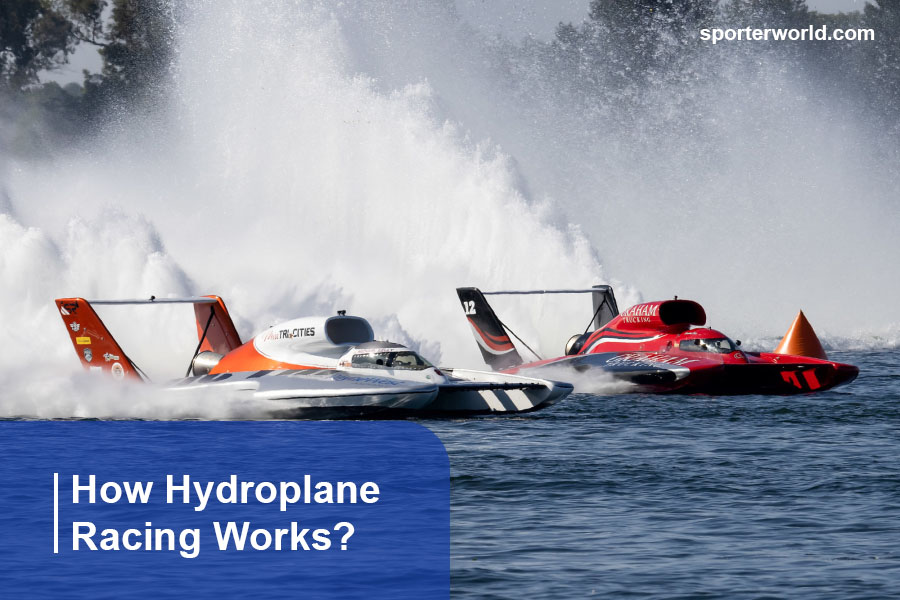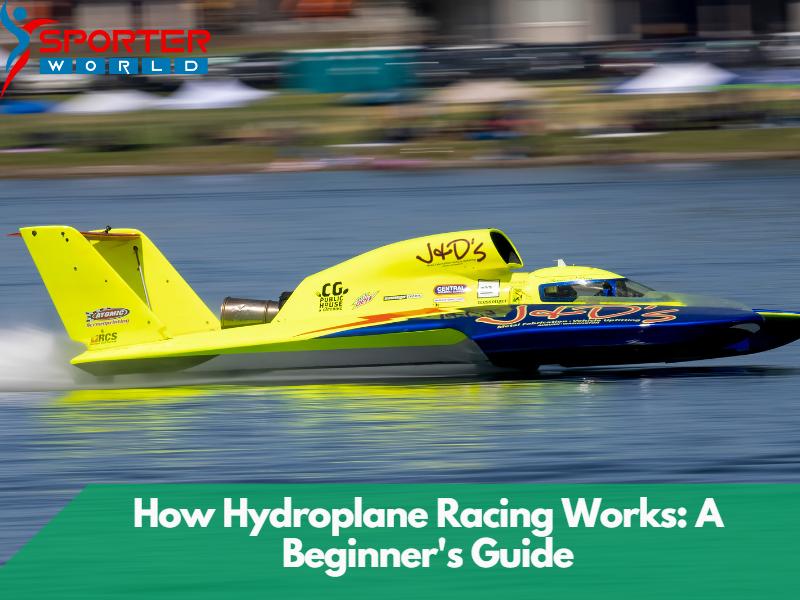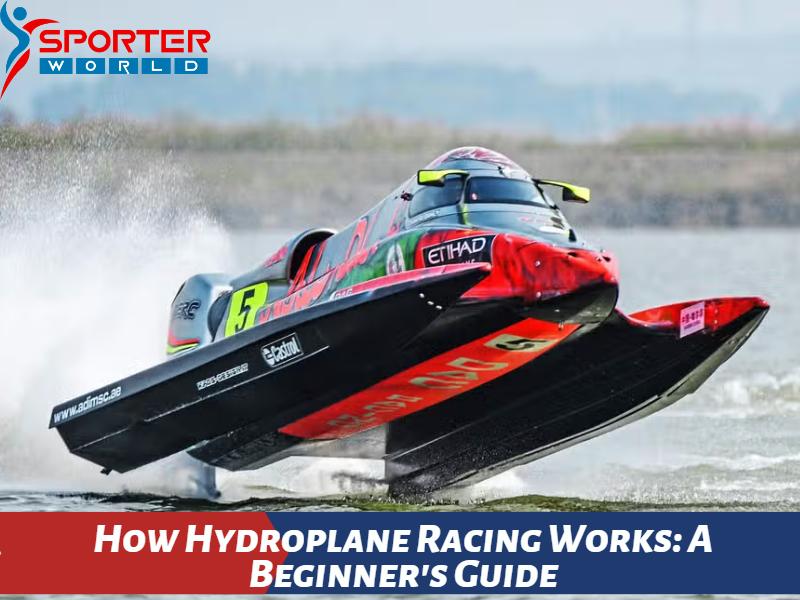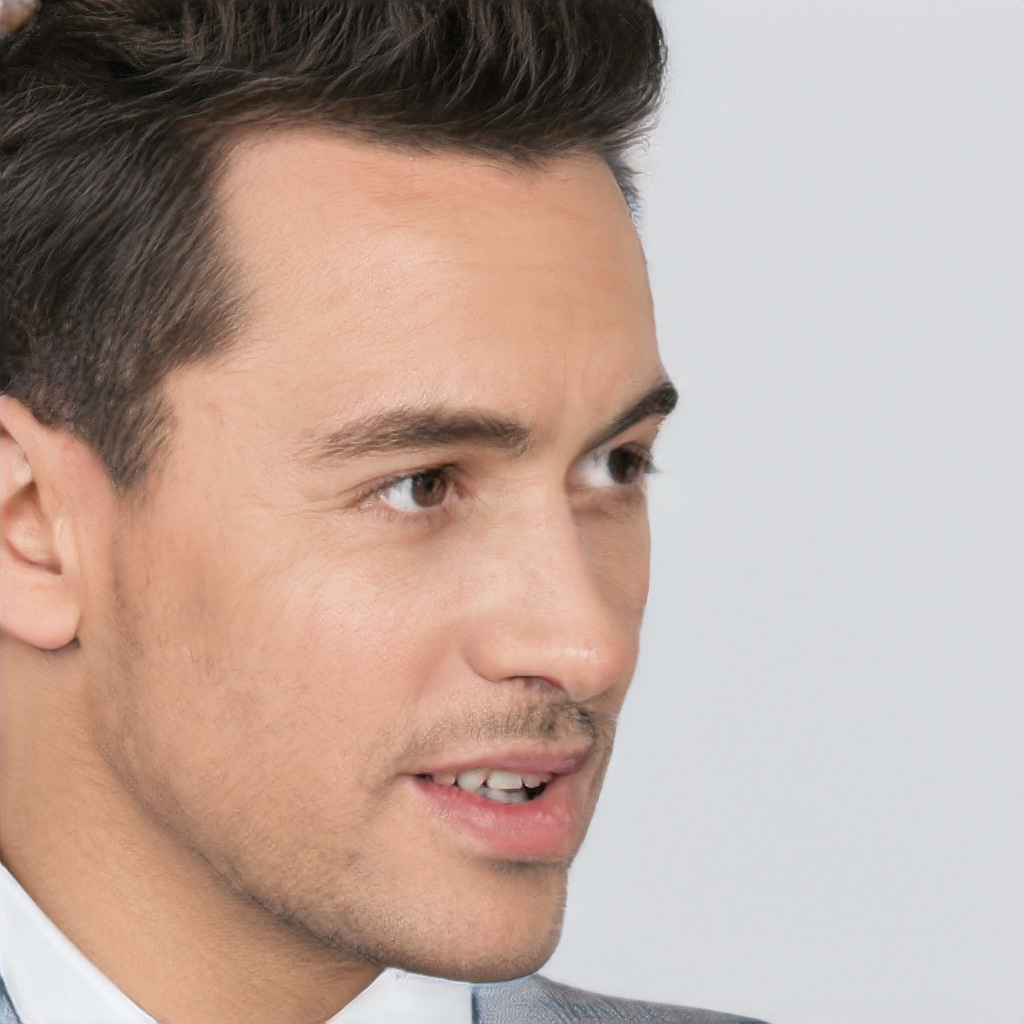Imagine the adrenaline rush of speeding across the water on a powerful machine capable of reaching speeds over 200mph. That’s exactly what hydroplane racing is all about. For those who love the thrill of speed and competition, hydroplane racing is the ultimate experience.
Hydroplane racing has existed for over a century, beginning in the Pacific Northwest in the early 1900s. Since then, it has evolved into a highly competitive and thrilling sport, drawing fans worldwide. Whether you’re a seasoned racer or a newcomer to the sport, hydroplane racing is a unique and exciting experience that shouldn’t be missed.
In this article, we’ll look closer at hydroplane racing – its history, the gear required, and the techniques needed to win. Keep reading if you’re ready to get your adrenaline pumping and experience the thrill of hydroplane racing.
How Hydroplane Racing Works?

Hydroplane racing is a thrilling and fast-paced water sport that involves high-speed boats called hydroplanes. These boats are specifically designed to skim or “plane” on top of the water’s surface, enabling them to reach incredible speeds. Here’s how hydroplane racing works:
- Hydroplane Design: Hydroplanes are lightweight, high-performance boats that are built for speed and maneuverability. They typically feature a long, narrow hull with a stepped or sponson design. The hull is often made of lightweight materials such as carbon fiber or Kevlar to reduce weight and increase strength.
- Classes: Hydroplane racing is divided into different classes based on boat size, engine type, and configuration. The most popular classes include Unlimited Hydroplanes, Grand Prix Hydroplanes, and Stock Outboard Hydroplanes, each with its specifications and rules.
- Power Sources: Hydroplanes can be powered by various engines, including piston engines, turbine engines, or electric motors, depending on the class. Unlimited Hydroplanes, for example, are typically powered by turbine engines that produce massive horsepower.
- Racing Course: Hydroplane races occur on a designated water body, such as a lake or a river. The racing course is usually an oval-shaped circuit marked by buoys or pylons. The length and layout of the course may vary depending on the event and the class of hydroplanes.
- Heat Races: Hydroplane races are typically divided into multiple heat races. Each heat consists of several laps around the race course. The number of heats and the distance covered may vary depending on the event and the class of hydroplanes. Heat races allow multiple boats to compete simultaneously and determine the positioning for the final race.
- Starting Procedure: Before each heat, the hydroplanes line up in a staggered formation along the starting line. The race begins with a countdown and a green flag. The boats accelerate from a standing start and try to reach the first turn ahead of their competitors.
- Strategy and Racing Tactics: Hydroplane racing requires a combination of speed, skill, and strategy. Drivers must carefully manage their speed, take the best racing line through turns, and strategically position their boats to overtake opponents. Aerodynamic factors, such as the placement of the sponsons or the wing adjustment on an Unlimited Hydroplane, can significantly impact performance.
- Safety Measures: Safety is paramount in hydroplane racing. Drivers are required to wear safety equipment, including life jackets, helmets, and protective suits. Boats are equipped with safety features such as roll cages, cockpit canopies, and emergency shut-off systems. Rescue boats and divers are present to respond quickly in case of an accident or emergency.
- Championship and Points: Hydroplane racing events are often part of a championship series. Points are awarded based on finishing positions in each heat and the final race. At the end of the season, the driver or team with the highest accumulated points is crowned the champion.
Hydroplane racing combines engineering innovation, skilled piloting, and high-speed excitement. It’s a sport that captivates both participants and spectators with its adrenaline-pumping action on the water.
You Can Also Read: What is Horseball? A Guide to the Fast-Paced Game on Horseback

What Powers A Hydroplane?
Hydroplanes can be powered by different engines, depending on the class and regulations of the racing event. One common type of engine found in hydroplanes is the piston engine, also known as an internal combustion engine. These engines run on gasoline and utilize a reciprocating motion of pistons within cylinders to generate power. They can be two- or four-stroke engines, commonly used in smaller classes such as Stock Outboard Hydroplanes.
Turbine engines are popular in high-performance hydroplane racing, particularly in the Unlimited Hydroplane class. Turbine engines operate through a continuous combustion process, which allows them to generate immense power. They are renowned for their exceptional horsepower output and ability to produce substantial thrust. Various substances, including jet fuel or methanol, can fuel turbine engines. Unlimited Hydroplanes, among the fastest hydroplanes, often employ these high-powered turbine engines.
It’s important to note that the choice of engine significantly impacts the performance and speed of a hydroplane. Different classes and events may have specific regulations regarding the type of engines allowed, ensuring fair competition and safety. Whether it’s the revving outboard motors of smaller hydroplanes or the thunderous turbine engines propelling Unlimited Hydroplanes, the power sources used in hydroplane racing play a vital role in delivering the exhilarating speeds and adrenaline-pumping action synonymous with the sport.
How Fast Are The Hydroplanes In Racing?
Hydroplanes in racing can achieve impressive speeds depending on the class, design, and engine power. Here are some general speed ranges for different types of hydroplanes:
- Stock Outboard Hydroplanes: In smaller classes, such as Stock Outboard, hydroplanes can reach speeds ranging from 40 to 80 miles per hour (64 to 129 kilometers per hour). These classes typically use smaller piston engines and are designed for entry-level racers.
- Grand Prix Hydroplanes: Grand Prix Hydroplanes are larger and more powerful than Stock Outboard classes. They often feature modified piston engines or turbine engines. These hydroplanes can reach speeds between 100 and 140 miles per hour (161 to 225 kilometers per hour) on average.
- Unlimited Hydroplanes: Unlimited Hydroplanes are the fastest and most powerful class in hydroplane racing. These hydroplanes are purpose-built for extreme speed. Powered by turbine engines capable of producing over 3,000 horsepower, they can achieve astonishing speeds of 200 miles per hour (322 kilometers per hour) or more. However, it’s worth noting that the top speeds can vary depending on factors such as water conditions, course length, and individual boat design.
It’s important to remember that these speed ranges are general estimates and can vary depending on specific race conditions, modifications, and technological advancements. Hydroplane racing showcases the engineering prowess and skill of the drivers as they push the limits of speed and maneuverability on the water.
Read More: When Is District 8 Hockey?- Detailed Schedule

Frequently Asked Questions
1. How do hydroplanes stay afloat at such high speeds?
Hydroplanes stay afloat and maintain stability at high speeds due to their unique design features. The stepped or sponson hull design helps create lift and reduces drag. Sponsons are additional flotation devices or extensions on the sides of the hull that provide extra buoyancy and stability. The hull design, sponsors, and the high speed at which the hydroplanes move allow them to plane on top of the water rather than plow through it.
2. Are there any safety measures in place for hydroplane racing?
Yes, safety is of utmost importance in hydroplane racing. Drivers are required to wear safety equipment such as life jackets, helmets, and protective suits. The boats have safety features like roll cages and cockpit canopies to protect drivers in an accident. Additionally, rescue boats and divers are present during races to respond quickly to emergencies. Safety protocols and regulations are continually reviewed and updated to ensure the well-being of both drivers and spectators.
3. How are hydroplane racing courses set up?
Hydroplane racing courses are typically set up as oval-shaped circuits marked by buoys or pylons. The exact length and layout of the course may vary depending on the event and the class of hydroplanes. The racecourse is designed to provide challenging turns and straight sections where the hydroplanes can achieve high speeds. Course layouts are carefully planned to ensure safety, excitement, and fair competition among the racers.
4. What determines the winner in hydroplane racing?
The winner in hydroplane racing is determined based on a combination of factors. Each race has multiple heat races followed by a final race. Points are awarded for finishing positions in each heat, and the accumulated points determine the overall standings. The driver or team with the highest total points at the end of the event or championship series is declared the winner. It’s important to note that points may vary depending on the class and specific race rules.
5. Can hydroplanes race in different water conditions?
Yes, hydroplanes are designed to handle various water conditions. However, the performance and speed of hydroplanes can be affected by factors such as wind, waves, and water surface conditions. Calmer water conditions generally allow hydroplanes to achieve higher speeds and maintain stability. In rougher water, drivers must adjust their racing and boat-handling techniques to navigate through waves and maintain control. The drivers’ skill becomes crucial in adapting to different water conditions and optimizing the performance of the hydroplanes.
Conclusion
Hydroplane racing is an exhilarating spectator sport that showcases the engineering brilliance of high-performance racing boats and the skill of talented drivers. Hydroplanes are designed to navigate challenging water conditions while achieving top speeds safely. The winner is determined based on a point system, with the driver or team having the most points at the end of the event or championship series being declared victorious.




